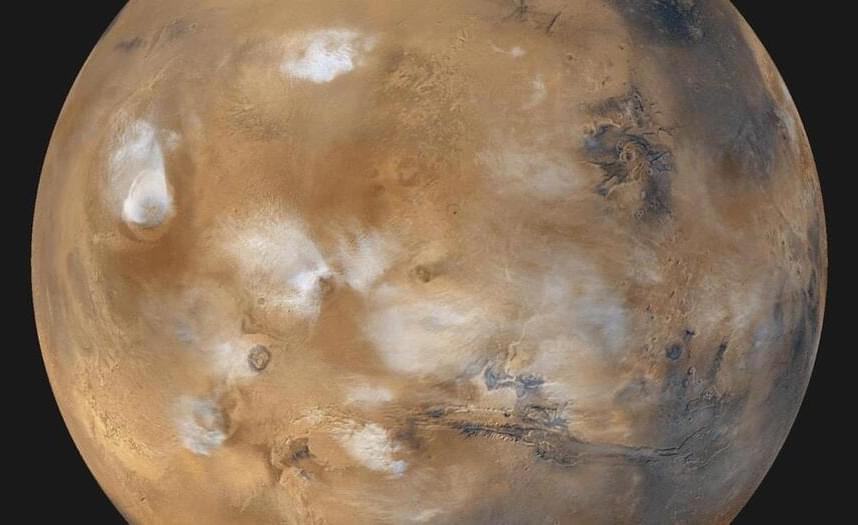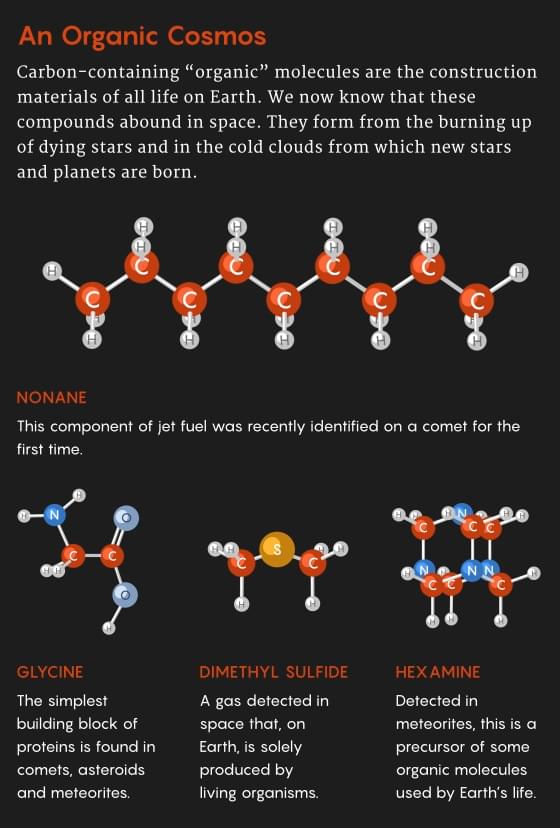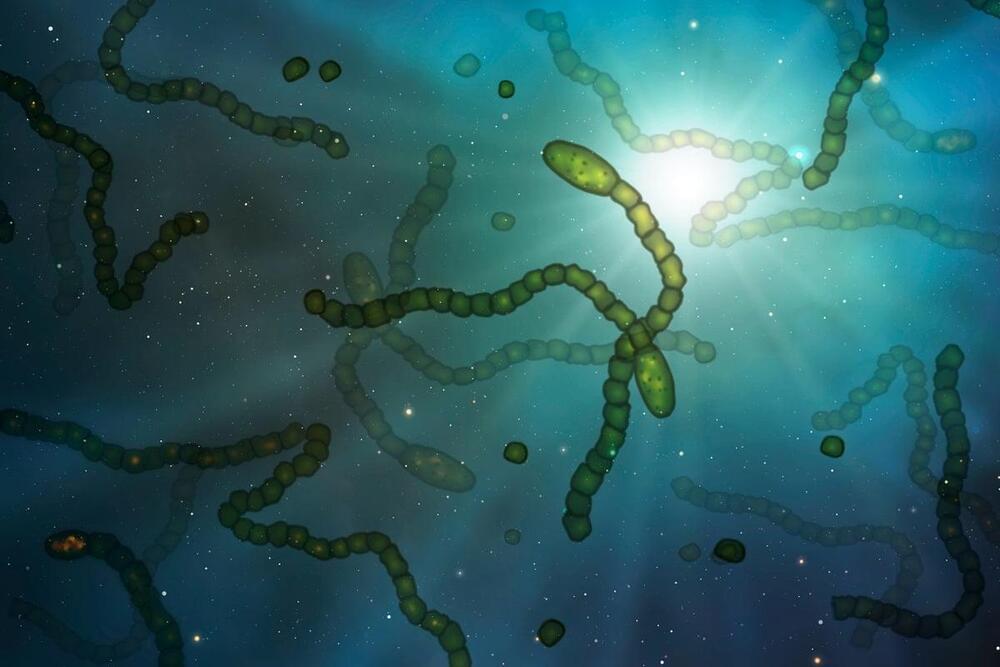New methods could uncover hidden megastructures in distant stellar systems.
Category: alien life – Page 23

From Earth to alien worlds: Exploring the fundamental limits to life
Extraterrestrial and artificial life have long captivated the human mind. Knowing only the building blocks of our own biosphere, can we predict how life may exist on other planets? What factors will rein in the Frankensteinian life forms we hope to build in laboratories here on Earth?
An open-access paper published in Interface Focus and co-authored by several SFI researchers takes these questions out of the realm of science fiction and into scientific laws.
Reviewing case studies from thermodynamics, computation, genetics, cellular development, brain science, ecology, and evolution, the paper concludes that certain fundamental limits prevent some forms of life from ever existing.

Mars Is Likely Hiding Oceans Worth Of Water Deep In Its Crust — This Could Upend Our Plans For the Planet
Link :
A year and a half after the end of its mission, NASA’s InSight Mars lander may have just helped scientists find enough water to fill an ocean.
Deep beneath NASA’s InSight lander (RIP InSight), an ocean’s worth of liquid water may be trapped in rocky fissures, suggests a recent study of data recorded during more than 1,300 Marsquakes. If University of California, San Diego, geologist Vashan Wright and his colleagues are right, then Mars may be hiding underground reservoirs of water larger than the planet’s ancient, now-vanished, oceans. That could change how we search for traces of life on Mars, as well as how future Mars missions could supply themselves with water, rocket fuel, and oxygen to breathe.
Wright and his colleagues published their work in the journal Proceedings of the Natural Academy of Sciences.


Keith Wiley — The Fermi Paradox, Self-Replicating Probes, Interstellar Transport Bandwidth
It has been widely acknowledged that self-replicating space-probes (SRPs) could explore the galaxy very quickly relative to the age of the galaxy. An obvious implication is that SRPs produced by extraterrestrial civilizations should have arrived in our solar system millions of years ago, and furthermore, that new probes from an ever-arising supply of civilizations ought to be arriving on a constant basis. The lack of observations of such probes underlies a frequently cited variation of the Fermi Paradox. We believe that a predilection for ETI-optimistic theories has deterred consideration of incompatible theories. Notably, SRPs have virtually disappeared from the literature. In this paper, we consider the most common arguments against SRPs and find those arguments lacking. By extension, we find recent models of galactic exploration which explicitly exclude SRPs to be unfairly handicapped and unlikely to represent natural scenarios.
We also consider several other models that seek to explain the Fermi Paradox, most notably percolation theory and two societal-collapse theories. In the former case, we find that it imposes unnatural assumptions which likely render it unrealistic. In the latter case, we present a new theory of interstellar transportation bandwidth which calls into question the validity of societal-collapse theories.
Finally, we offer our thoughts on how to design future SETI programs which take the conclusions of this paper into account to maximize the chance of detection.
Fermi Paradox paper on Arxiv http://arxiv.org/abs/1111.
Von Neumann Self-Replicating Probes. Percolation Theory, Interstellar Societal Collapse, ETI May Still Exist in our Galaxy.
==Conclusion==
This paper was arranged in three parts. First, we introduced SRPs, presented the prevalent arguments against them, and showed that such arguments leave room for future SRP consideration. Namely, we proposed that recent literature has been overzealous in its exclusion of SRPs and we encourage their return to the field.
Second, we presented percolation theory and its nonsociological explanation for the Fermi Paradox. We then showed that the theory can be extended in very reasonable ways which.
undermine its primary conclusion that galactic expansion might.
be intrinsically bounded.
Third, we reviewed two theories of interstellar societal collapse and showed a few counter-arguments to each theory. Furthermore, we introduced ITB theory and showed that its implications might suggest a fundamental error in such theories.
We then discussed one additional paper theorizing that interstellar societies shrink back to their homeworlds and explained that the model involves a number of unlikely assumptions. Following this final analysis, we described the best theory yet oered on the Fermi Paradox which permits intragalactic ETI, namely that exploration probes may currently reside in our solar system, yet undiscovered. Lastly, we offered our thoughts on how to design future SETI programs so as to maximize the likelihood of success.
Science, Technology \& the Future: http://scifuture.org.


Earth Life Found inside Ryugu Asteroid Samples
Material from asteroid Ryugu riddled with earthly microbes provides a cautionary tale for scientists seeking signs of alien life.
By Sharmila Kuthunur edited by Lee Billings.
Are We Living In The Dark Forest? | An Answer to the Fermi Paradox
Is advanced alien life hiding from human eyes? Join us… and find out!
Subscribe: https://wmojo.com/unveiled-subscribe.
In this video, Unveiled takes a closer look at Liu Cixin’s Dark Forest theory!
This is Unveiled, giving you incredible answers to extraordinary questions!
Find more amazing videos for your curiosity here:
Why Did NASA Stop Going To The Moon? — https://www.youtube.com/watch?v=V8A6-3vDPME
Will Aliens Look Like Human Beings? — https://www.youtube.com/watch?v=gj-uV9pSc30
#DarkForest #Aliens #UAP #Space #Science #WhatIf #Unveiled
How to Win an Interstellar War
Check out some of our favorite shop products here: https://kgs.link/shop Our shop is not only our most important source of income, but our passion project where we create sciencey products with of lot of love and detail.
Sources \& further reading: https://sites.google.com/view/sources…
Could aliens destroy us from light years away? Another day at Kurzgesagt Labs, where we answer the most important questions with science.
Today: how might civilizations wage war across light years? What kind of devastating weapons could they use and what would they look like?
OUR CHANNELS
▀▀▀▀▀▀▀▀▀▀▀▀▀▀▀▀▀▀▀▀▀▀▀▀▀▀
German: https://kgs.link/youtubeDE
Spanish: https://kgs.link/youtubeES
French: https://kgs.link/youtubeFR
Portuguese: https://kgs.link/youtubePT
Arabic: https://kgs.link/youtubeAR
Hindi: https://kgs.link/youtubeHI
Japanese: https://kgs.link/youtubeJA
Korean: https://kgs.link/youtubeKO
HOW CAN YOU SUPPORT US?
▀▀▀▀▀▀▀▀▀▀▀▀▀▀▀▀▀▀▀▀▀▀▀▀▀▀
This is how we make our living and it would be a pleasure if you support us!
Get Products designed with ❤ https://shop-us.kurzgesagt.org.